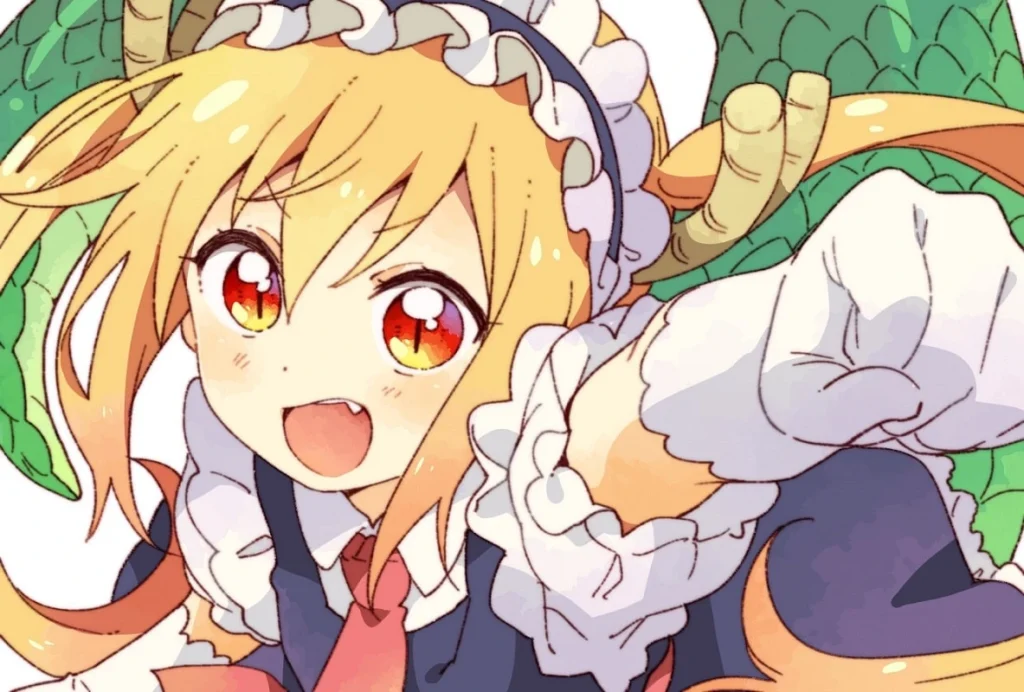In anime, various character archetypes are known as “dere” types, each possessing distinct and notable characteristics. These dere types exhibit different traits that shape their actions and personalities.
Due to the dynamic nature of the Japanese language and the constant evolution of anime and manga, new word combinations frequently emerge, leading to the emergence of additional character types that can be classified under the dere archetype. Some of these new types may even gain popularity over time.
There are more than 10 dere types, although we often encounter some more frequently than others. The following are a few of the commonly encountered dere types in anime, and a couple are rarely mentioned.
“Dere” Character Types in Anime
1. Tsundere

The tsundere archetype is one of anime and manga’s most commonly encountered characters. The term “tsun” is derived from onomatopoeic words that mimic the sound “tsun tsun,” representing a dismissive or angry expression.
Tsundere characters possess tough personalities and often exhibit open hostility towards their love interests. However, the characters become shy and angry when their love interest compliments or shows them kindness.
They often adopt a haughty or defensive attitude to mask their embarrassment while secretly finding happiness in the care and attention they receive.
A notable example of a male tsundere is Kyo Sohma from Fruits Basket, while Hitagi Senjougahara from Monogatari is an excellent example of a female tsundere.
2. Yandere

Yandere characters exhibit an intense and often unsettling obsession with their love interests, disregarding whether their feelings are reciprocated. The term “yan” stems from the Japanese word “yanderu,” which means experiencing mental or emotional distress.
On the surface, a Yandere character appears kind and sweet, seamlessly blending in with others. However, beneath this facade lies a deeply rooted and dangerous obsession for their love interest that consumes them.
Yandere characters are skilled in deception when it comes to their love interests. Once their affection is triggered, they shed their mask, and their willingness to go to any lengths for their beloved takes hold.
They are notorious for engaging in sociopathic acts of violence, such as kidnapping and even murder, in their desperate attempts to keep their love interests all to themselves and prevent any potential rivals.
A highly renowned example of a Yandere girl is Yuno Gasai from Future Diary. Her character exemplifies the extreme behaviors and complexities associated with the Yandere archetype.
3. Deredere

Deredere characters embody pure and genuine love. “dere dere” signifies a kind of love unadulterated and unaffected by other emotional or intimate aspects.
These characters exude energy and sweetness, openly expressing their affection for their love interest in a wholesome manner.
Deredere characters typically remain composed even when their love interests interact with others. They are not prone to jealousy, contributing to their balanced nature. Ochaco Uraraka from My Hero Academia is an excellent example of a female deredere character, showcasing her sincere and affectionate nature.
4. Dandere

Dandere characters in anime and manga are often portrayed as reserved and unemotional due to extreme shyness. The term “dan” in Dandere is derived from the Japanese word “danmari,” which conveys the idea of remaining quiet and still.
These characters tend to be reticent and may only speak when directly addressed. It’s important to note that Dandere characters are not necessarily mean or cold-hearted. They prefer to express themselves through actions rather than words and may lean towards being asocial.
The “dere” aspect of their personality comes into play regarding their love interest. In the presence of the right person, Dandere characters can become quite talkative and open up more.
A notable example of a dandere character is Hinata Hyuga from Naruto, especially in her younger years. Her reserved nature and difficulty expressing herself make her a prime representation of the dandere archetype.
5. Kuudere

Kuudere characters are known for their quiet and reserved nature, but unlike Dandere characters, it’s not due to shyness. Instead, Kuudere characters possess a cold and cynical demeanor. The term “Kuu” in Kuudere is derived from the Japanese romanization of the English word “cool,” which is written as “kuuru” in romaji.
These characters rarely display warmth or affection, even towards their love interests. They tend to act like they don’t care about the people around them, but deep down, they have strong feelings and concerns.
A prime example of a Kuudere character is Homura Akemi from Puella Magi Madoka Magica. Throughout the series, Homura maintains a cold and distant attitude toward Madoka. This behavior stems from her knowledge of the world’s fate and her intention to sacrifice herself to save it. Consequently, she sees no purpose in forming close connections with others.
6. Himedere & Oujidere

Himedere and Oujidere are two distinct character types that share a common theme. In Japanese, “Hime” translates to “princess,” while “ouji” means “prince.”
These character archetypes don’t necessarily have to be actual royalty, but they exhibit behaviors and traits associated with princesses and princes. They expect to be treated as such by their love interests and those around them.
An example of a himedere is Noelle Silva from Black Clover, who hails from a royal family. Noelle demands to be treated as royalty by everyone and displays a tsundere side when interacting with Asta.
On the other hand, a classic example of an oujidere is Ciel Phantomhive from Black Butler. Ciel is characterized by his arrogance and heavy reliance on his maid to handle various tasks.
7. Kamidere

Kamidere characters embody a god complex, with “kami” representing the Japanese word for “god.”
A defining trait among kamidere characters is their pride in themselves and their perceived “godlike” abilities. Some may genuinely believe they possess god-like qualities or higher status than others.
There are two variations of kamidere characters. One type maintains their belief in superiority but still shows respect towards others. The other type openly displays condescension, arrogance, and narcissism.
While Light Yagami from Death Note may not be particularly interested in love or romance beyond her manipulative intentions, she is an exemplary kamidere character.
8. Bakadere

Bakadere is a less common character archetype that portrays a clumsy individual who often makes unwise decisions due to a lack of common sense. The term “baka” in Japanese means “stupid” or “idiot.”
Bakadere characters often share traits with other archetype variations, but some embody pure bakadere characteristics. This type of character is frequently found in slice-of-life anime series.
Tohru Honda from Fruits Basket exemplifies the classic bakadere character blended with deredere qualities. Her affection for Kyo is expressed with genuine delight and charming awkwardness.
9. Sadodere

Sadodere characters have a distinct inclination toward manipulating others in a sadistic manner. Just like the “kuu” in kuudere originates from the English word, the term “sado” in sadodere reflects the Japanese pronunciation of “sadomasochism.”
These characters derive pleasure from putting their love interest in challenging situations that inflict pain or humiliation, whether it’s physical or emotional. Sadodere characters often lack empathy towards others and are solely drawn to individuals they value.
An excellent example of a sadodere character is Kurumi Tokisaki from Date A Live. Throughout the series, Kurumi frequently manipulates Shidou Itsuka and firmly believes that only she has the right to do so. While Kurumi saves Shidou in various situations, her intentions are usually to cause him harm later on.
10. Sundere

A shundere character is portrayed as someone who experiences ongoing depression and sadness throughout the series. The term “shun” is derived from the Japanese onomatopoeia “shun…,” which conveys a sense of melancholy and deep sadness. In the case of a shundere character, they don’t always require a specific reason to feel sad; their moody disposition alone is often enough to define them as shundere.
A notable example of a shundere character is Tomoko Kuroki from WataMote. Tomoko is an introverted individual who constantly feels out of place in social situations. Despite his attempts to fit in and his aspirations, he consistently falls short due to his naivety and overconfidence, leading to a deep sense of depression in the end.
11. Goudere

Goudere is a less common dere archetype but offers an intriguing character portrayal.
The term “gou” in goudere can be associated with various Japanese words, such as “gouki,” which can mean “strong demon” or “fortitude” depending on the kanji used. However, it is most commonly linked to “gou gou,” which translates to “riot.”
Goudere characters exhibit an intense zeal to impress their love interests, often leading to comical blunders in their pursuit of pleasing them.
A great example of a goudere character is Toru from Miss Kobayashi’s Maid Dragon. Toru goes to great lengths to anticipate every need of her crush, even if it means fulfilling them whether Kobayashi desires it or not. This unwavering commitment to impress her love interest leads to humorous and entertaining situations.
12. Hiyakasudere

The hiyakasudere character type is not as widely known as others like tsundere or sadodere, but it shares some similarities.
The term “hiyakasu” in Japanese means “to make fun of, tease, or taunt.” Therefore, a hiyakasudere character takes pleasure in playfully flirting with their love interest.
Unlike the cruel tendencies of sadodere or the tsundere’s tendency to hide their true feelings, hiyakasudere characters are unashamed and open about their intentions. This archetype can stand on its own without overlapping with other types.
An excellent example of a hiyakasudere character is Holo from Spice & Wolf. Holo consistently engages in playful banter and teasing with Lawrence, her chosen love interest. Her flirtatious nature adds an enjoyable dynamic to their relationship.










